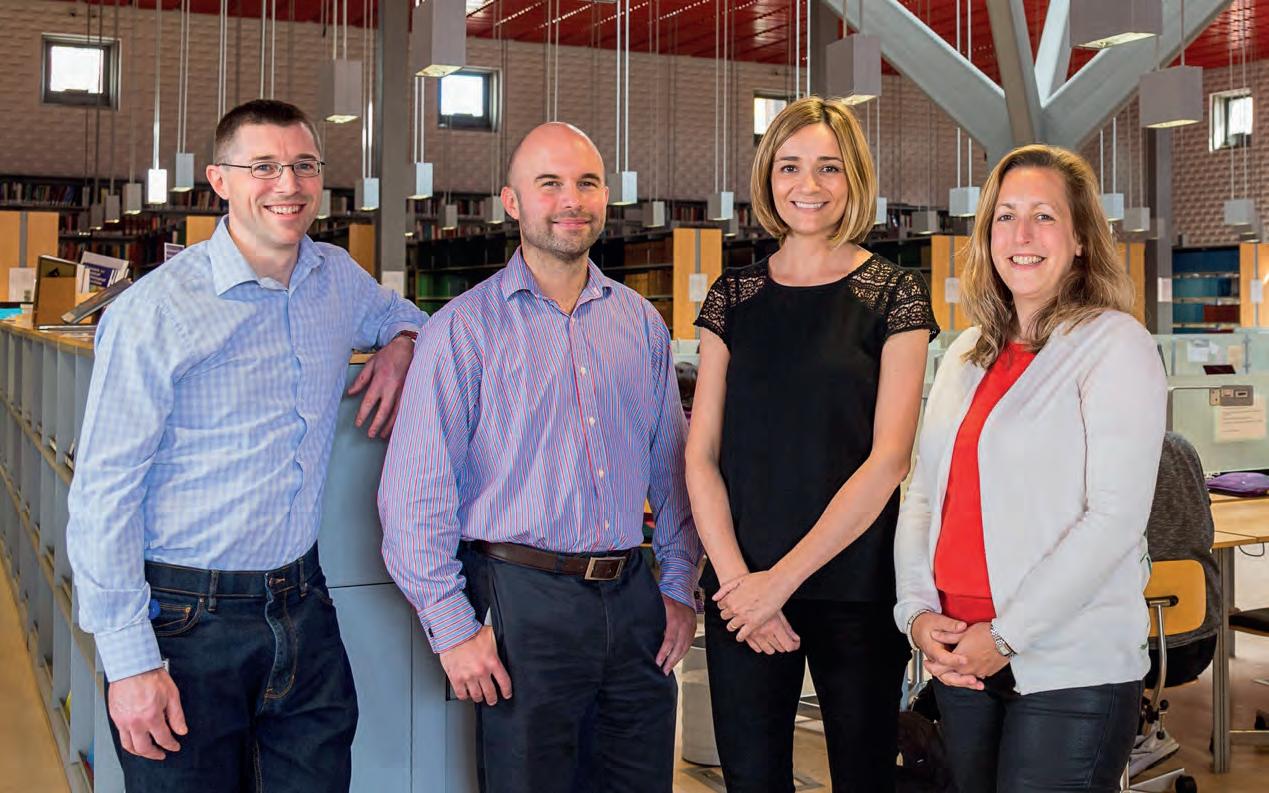
1 minute read
_________________________________________________________ Focus on spin-outs _________________________________________________________
In this issue we are taking a behind-the-scenes look at what makes the Department so successful at “spinning out” our basic research into pro table companies that are also helping to provide solutions to some the world’s most urgent problems from climate change to plastic pollution and chronic diseases.
Chemistry spin-out Pharmenable co-founders from right: Dr Hannah Sore (CEO, PharmEnable), Dr Natalia Mateu (Chief Scienti c O cer, PharmEnable), Dr Andreas Bender and Professor David Spring.
Two rising stars to keep an eye on are Knowles Lab spin-out Xampla (p. 6), who are producing a biodegradable material as strong as engineering plastic that could replace plastics in many areas, and Grey group spin-out Nyobolt (p. 8), which is developing fast-charging, high powered batteries using more environmentally friendly materials to help power the carbon-neutral future.
We wanted to know what it takes to develop an initial idea into a business, so we’ve asked members of the Reisner group to talk about their rst steps towards commercialisation, and we explore how the Centre for Misfolding Diseases has created a mutually bene cial two-way ow of research and ideas with spin-out Wren, based in the innovative Chemistry of Health incubator. The Financial Times has said “Cambridge is having a moment” with money pouring into the newly dubbed “Silicon Fen”, so we’ve talked to Cambridge Enterprise to nd out how they are helping researchers to harness this support. And chemistry alumnus Andy Richards explains what he is looking for as an investor.
We don’t have space to write about all our spin-outs, like PharmEnable, which uses advanced medicinal chemistry and arti cial intelligence to design potential drug therapies (a ‘hot theme’ according to Andy Richards), Cambridge Photon Technology, which is developing new materials to improve solar panel e ciency, and Healx, which is repurposing existing drugs to ght rare diseases, but you can read about them and other Chemistry success stories on our Collaboration and Impact pages (www.ch.cam.ac.uk/ collaboration-and-impact).










